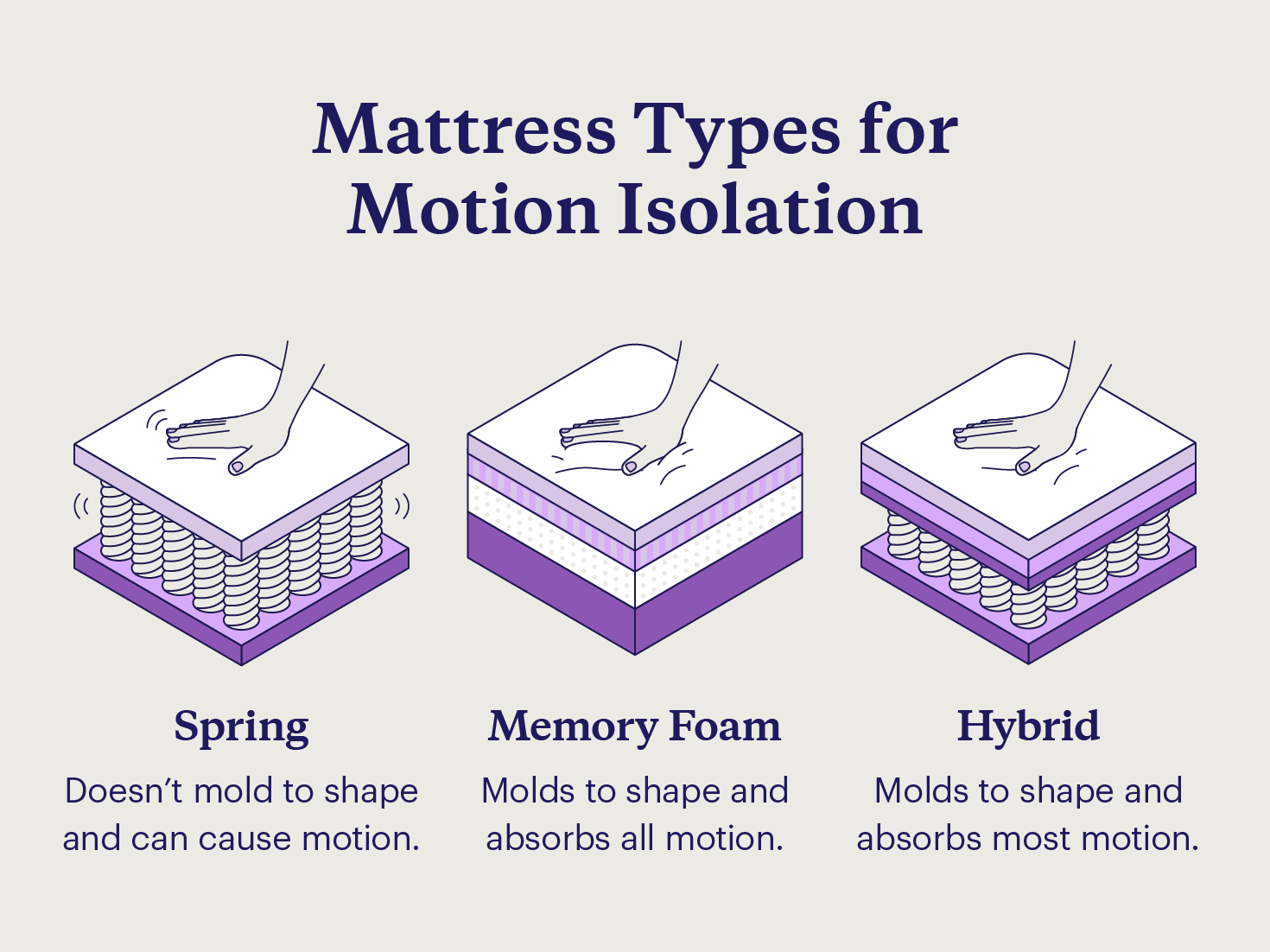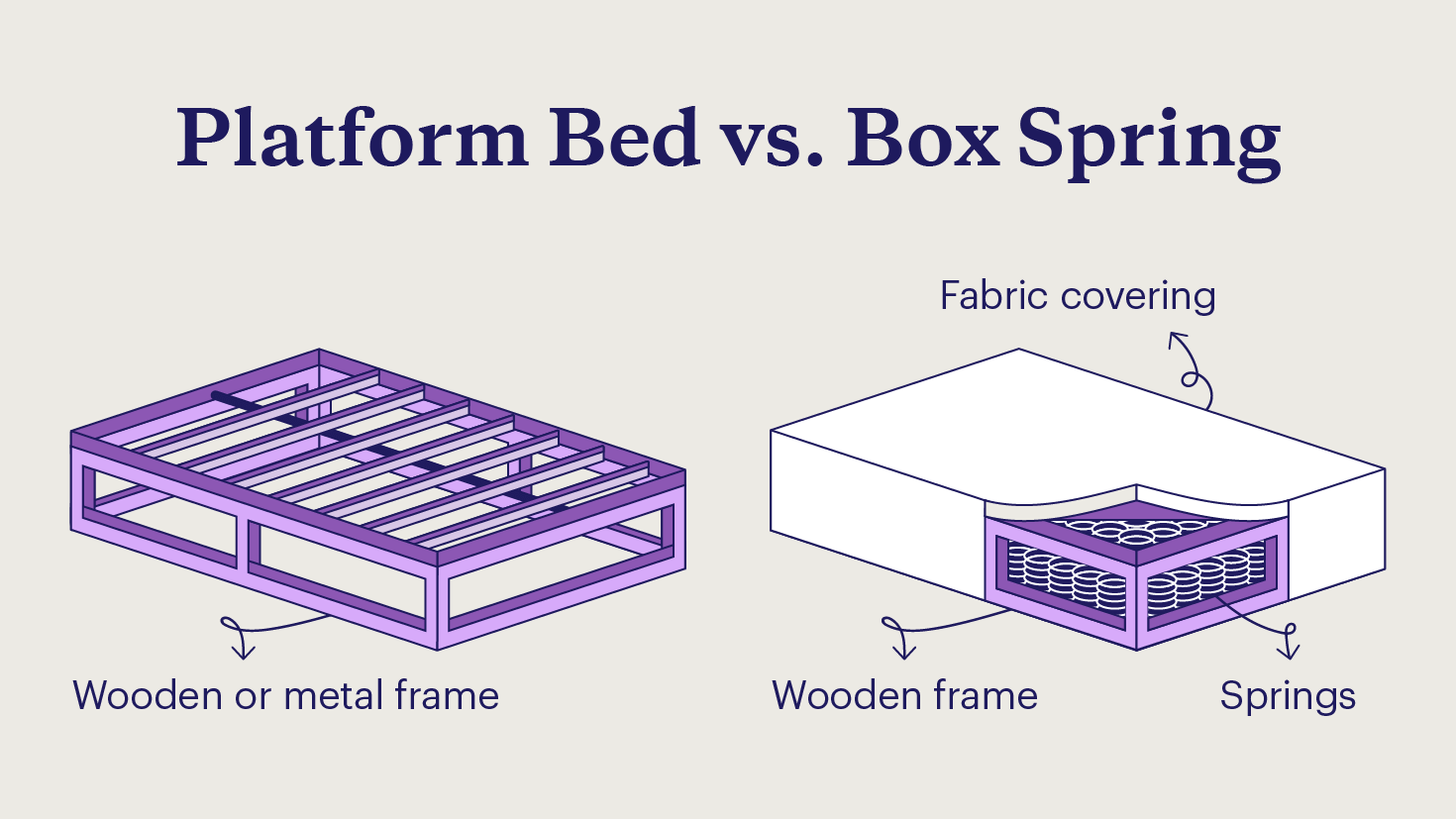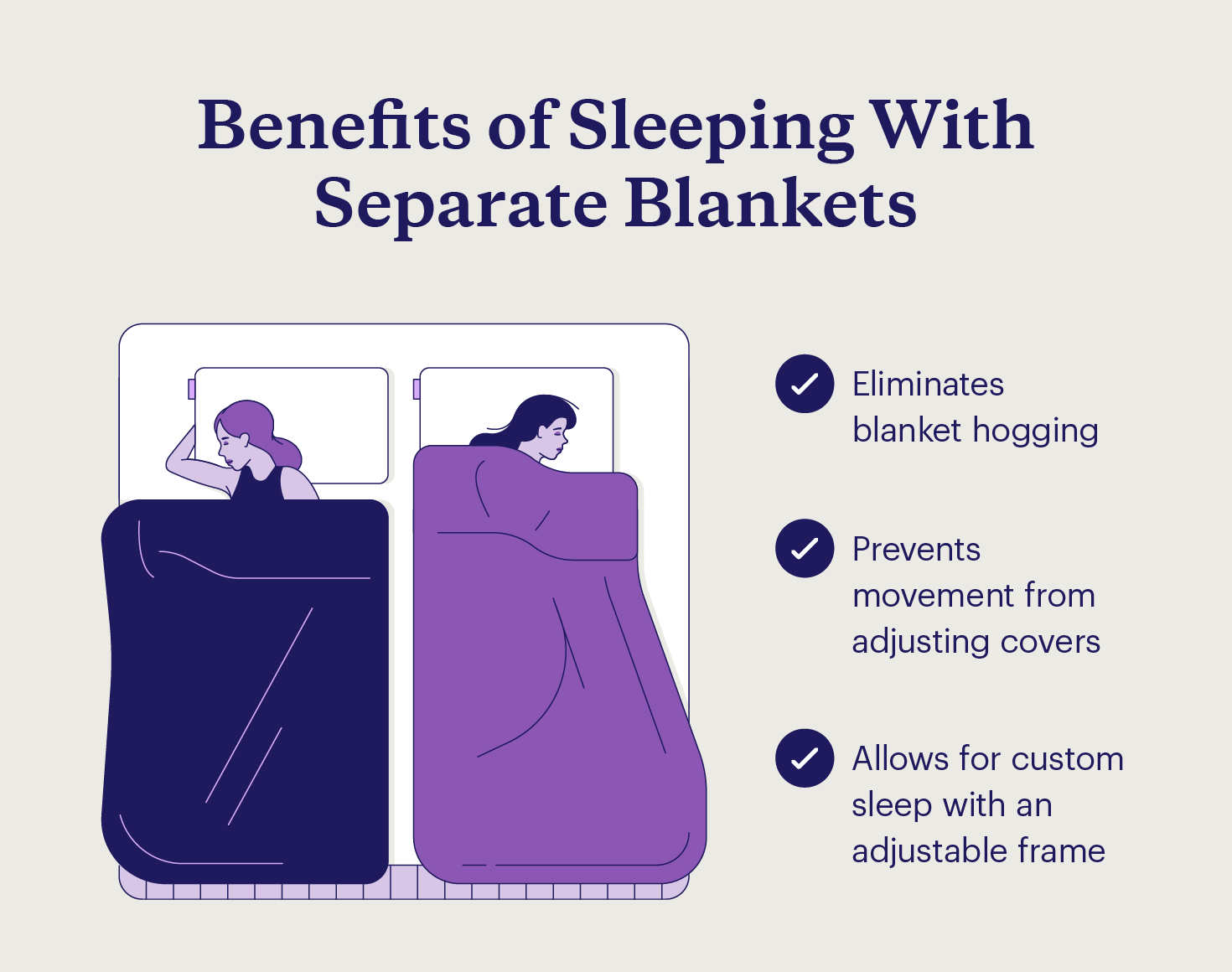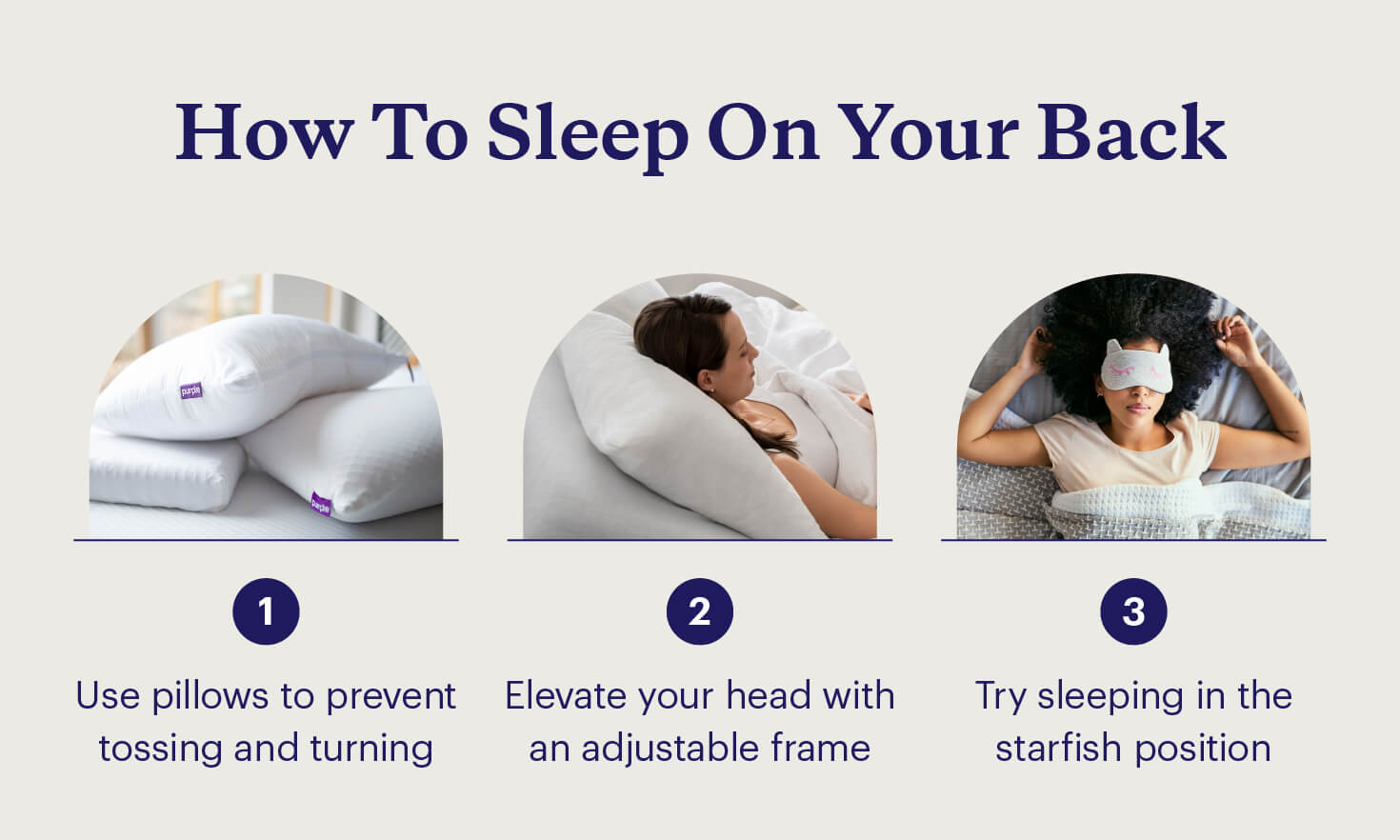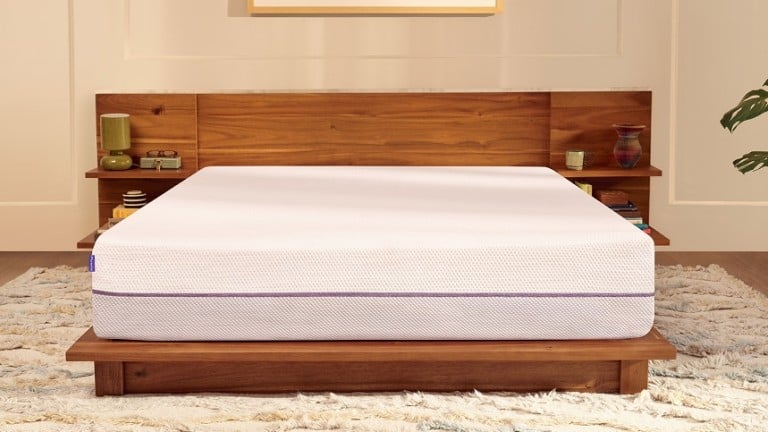
How To Reduce Motion Transfer in Bed: 9 Tips for Better Sleep
Key Takeaways
- Motion transfer refers to how movement is felt from one side of a bed to the other.
- An unsupportive mattress, coil box spring, and sleeping in too small of a bed can all cause motion transfer.
- Memory foam and hybrid mattresses tend to absorb motion better than traditional metal spring beds.
If you’ve ever been awakened by a partner getting into bed late or your pet readjusting in the middle of the night, chances are you’re all too familiar with motion transfer. Mattress motion transfer can be a significant sleep — and life — disruptor. In fact, we recently found that 1 in 2 people report low energy due to sleep issues. But getting a good night’s rest doesn’t have to be challenging.
Whether you're a light sleeper or share your bed with a partner who tosses and turns, understanding the factors that cause restless sleep and implementing the right strategies can make a world of difference.
From selecting the ideal mattress and bed frame to adjusting your sleep habits, here are practical steps you can take to minimize motion transfer and enjoy a more peaceful night's rest.
What Is Mattress Motion Isolation?
Mattress motion isolation refers to how motion is felt from one side of a bed to the other. A mattress with good motion isolation will keep motion transfer from being felt from across the bed, while poor motion isolation will cause even slight movements to cause sleep disturbances.
If you’ve ever slept on an old metal spring mattress, you may have experienced this yourself. But, even new mattresses can offer poor motion isolation depending on the materials they are made of.
Mattress motion transfer typically occurs more when sleeping with a partner or pet, but it can also occur simply from changing positions, even if you’re sleeping alone. This motion can cause sleep disruption, especially if you wake easily.
So, how can you combat motion transfer in bed?
1. Try a Different Mattress Type
A mattress’s materials arguably have the most impact on motion isolation. Spring mattresses tend to offer firmer support but can lead to a bouncing motion depending on the style, such as traditional metal vs. motion-absorbing fabric-wrapped coils. On the other hand, memory foam or hybrid mattresses tend to absorb motion better. This is because memory foam can mold to shape, allowing for even weight distribution.
The right bed for you will depend on the mattress qualities you’re looking for. A hybrid mattress, made of innerspring and foam, might be a better option if you’re looking for superior pressure relief and motion isolation, while a memory foam might be better if you prefer a cushiony softness.
Purple’s Restore™ Hybrid Mattress features edge-to-edge coils and GelFlex® Grid for support and a foam top layer to combat motion isolation for restful sleep. According to a recent sleep study, participants reported a 204% increase in their ability to sleep through the night without tossing and turning, going from an average rating of 26 on a 0-100 scale when on their original mattress to an average rating of 81 on a 0-100 scale when using a Purple Restore mattress1.
2. Upgrade to a Larger Bed
One of the more obvious solutions to motion transfer is upgrading to a bigger bed size. Larger bed sizes, like a king mattress or California king, offer more surface area, which creates more space between you and your partner. In addition, if you opt for a memory foam or hybrid mattress, more foam means more material to absorb motion.
That said, weight is also an important component of reducing motion transfer. Weight puts pressure on your mattress, and the materials support you. Essentially, more weight means less motion isolation. If a standard queen or king size isn’t big enough, you may find that a larger non-standard king bed size, such as a Wyoming king, is a better option for you and your partner.
Mattress Size | Average Weight Limit | Dimensions (W x L) |
250 pounds | 54 x 75 inches | |
500 pounds | 60 x 80 inches | |
500-550 pounds | 76 x 80 inches | |
500-550 pounds | 72 x 84 inches |
3. Opt For a Split King
Even with the right mattress, a partner who tosses and turns at night or sleeps on a different schedule can cause motion-related sleep disturbances. With a split king mattress, you get the best of both worlds: the surface area of a king with the separation of two different beds.
A split king measures 76 inches wide by 80 inches long and offers just over 42 square feet of surface area, the same as a standard king mattress. The biggest difference between a traditional king and a split king is that a split size offers a more custom sleep experience with better motion isolation.
4. Use a Platform Bed
When you think of what’s causing motion transfer, your mattress is probably the first solution that comes to mind. But the cause of this motion might actually be the result of your bed frame, not necessarily your mattress.
There are two common types of bed frames: platform and box springs. A platform frame creates a solid base to support a motion isolation mattress. On the other hand, a box spring uses coil springs, which aim to add additional support but can actually result in bouncing and squeaking.
Depending on your mattress, different types of bed frames may be a better fit for support and reduced motion. The best bed frame to reduce motion transfer will ultimately depend on your preferences. If you’re struggling with motion due to an outdated frame, switch to a platform bed for even support and better movement isolation.
5. Try a Mattress Topper
If you’re not in the market for a new bed but need a temporary solution to motion transfer, a mattress topper could be a good option. Mattress toppers are typically made of latex or memory foam (but can also be made of cotton, gel, or down), which helps to absorb motion. But, not every mattress should be paired with a topper.
A foam topper offers the most benefits when paired with a traditional spring mattress or frame. But, mattresses that are already designed to minimize motion, like Purple mattresses, should not be paired with a topper because it will interfere with their benefits.
6. Choose an Adjustable Frame
Tossing and turning is a common cause of bed motion at night. And this is typically a sign that your bed isn’t offering enough support. If you or your partner can’t seem to get comfortable or find that your bed frame moves too much while changing sleep positions, an adjustable frame could help.
Unlike traditional bases that lie flat, the best adjustable bed frames move with your body for a custom sleep position. The right support where you need it most can prevent excessive tossing and turning. Plus, sleeping slightly elevated can help you sleep on your back, which offers various health benefits.
Pairing the best mattress with your adjustable base can further enhance comfort and reduce motion transfer. Consider your options carefully to pick a flexible, durable mattress.
7. Sleep With Separate Blankets
Have you ever woken up with a chill only to find your partner hogging the covers? Or, woken from the rustling of your partner adjusting the blankets? While not a direct motion isolation issue, fighting over blankets can indeed disrupt sleep. And if you’re already struggling with motion isolation issues, the last thing you need is another reason to get woken up in the middle of the night.
Sleeping with separate blankets can help prevent movement from adjusting covers. This is especially true if you sleep with a split king mattress and a premium adjustable frame. Paired with your own set of blankets you can have completely customized sleep without worrying about your partner waking you up.
8. Use a Rug or Rug Grippers
A motion isolation mattress can certainly help curb movement at night. But, what if your mattress isn’t to blame? A mattress that slides against your bed frame or a bed with wheels that roll out of place can exacerbate existing motion isolation issues, leading to even more sleep disruptions. If you’re struggling with either of these issues, a rug or rug pad grippers can help.
For a rolling frame, try sliding a rug under your bed. The additional resistance can help keep your bed in place and the fabric can even help absorb motion. To prevent a mattress from sliding on a platform bed, place rug pad grippers in between your frame and mattress to keep it secure.
9. Adjust Your Sleep Position
If it feels like you’ve tried everything and nothing seems to be helping motion transfer, the key might just be changing your sleeping position. After all, a poor sleep position can cause tossing and turning which leads to additional motion. But how do you stop moving in your sleep?
Couples sleeping positions vary greatly, from the Leg Hug to the Bed Hog. Even if you sleep alone, your sleep positions could be causing restlessness and excess movement. In general, sleeping on your back is recommended for optimal support.
If sleeping on your back doesn’t come naturally, you can train yourself to sleep on your back by creating a pillow barrier. Tuck a few pillows of any size around your arms and legs to keep from rolling over at night and finally enjoy a restful night’s sleep.
Reduce Motion Transfer With Advanced Sleep Support
A good night's sleep shouldn't be interrupted by a restless partner or your own movements. By implementing these tips, like choosing a motion isolation mattress, upgrading to a larger bed size, or even adjusting your sleep position, you can learn how to reduce motion transfer in bed and fall asleep faster.
For the best mattress for motion isolation, consider the Restore Hybrid Collection. The GelFlex® Grid instantly adapts to any sleep position, and edge-to-edge coils offer full body support for less motion transfer.
FAQ
Motion transfer occurs when a mattress can’t absorb movement, usually because of the materials it’s made of. Mattress size and the type of bed frame you use can also impact motion transfer in bed.
One way to test for motion isolation when shopping for a new mattress is to use a trial period. After all, the best way to test is to actually use it firsthand. Some mattress brands, like Purple, offer a 100-day free trial to test a bed’s motion isolation benefits for yourself.
The best type of mattress for motion isolation is typically memory foam or hybrid, which is made somewhat of foam. This is because memory foam provides even weight distribution and absorbs movement well.
If your bed shakes when your partner moves, it could be from a bouncy box spring or potentially a slightly uneven floor, causing your bed to move. The best way to stop this is to try replacing a spring frame with a platform or adjustable base and placing a rug under your bed to prevent it from moving.
Yes, memory foam prevents motion transfer due to its unique properties. Unlike spring mattresses, memory foam absorbs movement and provides a supported sinking feeling rather than bouncy.
A memory foam mattress topper has the potential to stop motion transfer, but it depends on how thick it is. Additionally, if your bed is bouncy due to spring coils, a mattress topper may not be enough to absorb all of the movement occurring.
More To Explore
Level up your sleep routine with our most-loved products.

